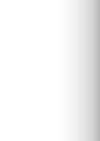

Dolatabadi K, Davarynejad G, Safarnejad M R, Ghayoor Z. Developing virus-free grapevine explants by using silver-nanoparticles and its comparison with chemo and thermotherapy-based approaches. JCP 2023; 12 (1) :15-27
URL:
http://jcp.modares.ac.ir/article-3-62267-en.html
1- Department of Horticulture, Faculty of Agriculture, Ferdowsi University of Mashhad, Iran.
2- Department of Horticulture, Faculty of Agriculture, Ferdowsi University of Mashhad, Iran. , davarynej@um.ac.ir
3- Department of Plant Viruses, Iranian Research Institute of Plant Protection, Tehran, Iran.
4- Research and Development Director, Goharbar Co., Ferdowsi University of Mashhad, Iran.
Abstract: (1431 Views)
Grapevine viruses cause significant losses in the yield of grape. This study describes applying silver nanoparticles (AgNPs) to produce virus-free grapevine plants and compares it with chemo and thermotherapy. Preliminary molecular analysis proved the presence of Grapevine fanleaf virus (GFLV) and grapevine leafroll-associated virus-1 (GLRaV-1) in the ʻAsgariʼ, ʻPeykaniʼ, and ʻShahaniʼ cultivar samples, then single node explants were cultivated in the MS medium. Thermotherapy at 35 ± 1 ºC and cycles of 35/38 ± 1 ºC, chemotherapy with ribavirin 0, 20, 25, and 30 μg.ml-1 and using AgNPs at 0, 10, 15, and 20 ppm in medium and 40, 50, and 60 ppm sprayed during acclimatization stage were applied to obtain virus-free explants. The results indicated that using 20 ppm AgNPs in medium and AgNPs combined treatment (15 ppm AgNPs in medium and sprayed with 50 ppm AgNPs in the acclimatization stage) were the most effective treatments for the elimination of viruses. The best treatment led to 100% eradication of GLRaV-1 and 67% of GFLV in ʻAsgariʼ, 100% eradication of GLRaV-1 and GFLV in ʻPeykaniʼ and 100% eradication of GLRaV-1 and 67% of GFLV in ʻShahaniʼ. Furthermore, applying of AgNPs improved plant growth parameters, including plant height, which in infected plantlets was (18.06, 12.36, and 14.92 cm in ʻAsgariʼ, ʻPeykaniʼ, and ʻShahaniʼ, respectively) less than virus-free plantlets. Leaf number was 45, 34, and 27 in virus-free plantlets of ʻAsgariʼ, ʻPeykaniʼ, and ʻShahaniʼ, respectively, but in infected plantlets, it was 24.40, 19.80, and 12. Leaf area increased from 5.34, 5.50, and 5.94 cm2 in infected plantlets to 9.56, 11.43, and 12.33 cm2 in virus-free plantlets of ʻAsgariʼ, ʻPeykaniʼ, and ʻShahaniʼ, respectively. Complementary results proved that chlorophyll content in virus-free is significantly higher than in virus-infected plantlets, which explains and confirms the change in growth parameters after virus removal.
Article Type:
Original Research |
Subject:
Plant Disease Management Received: 2022/06/16 | Accepted: 2023/01/27 | Published: 2023/05/4













































